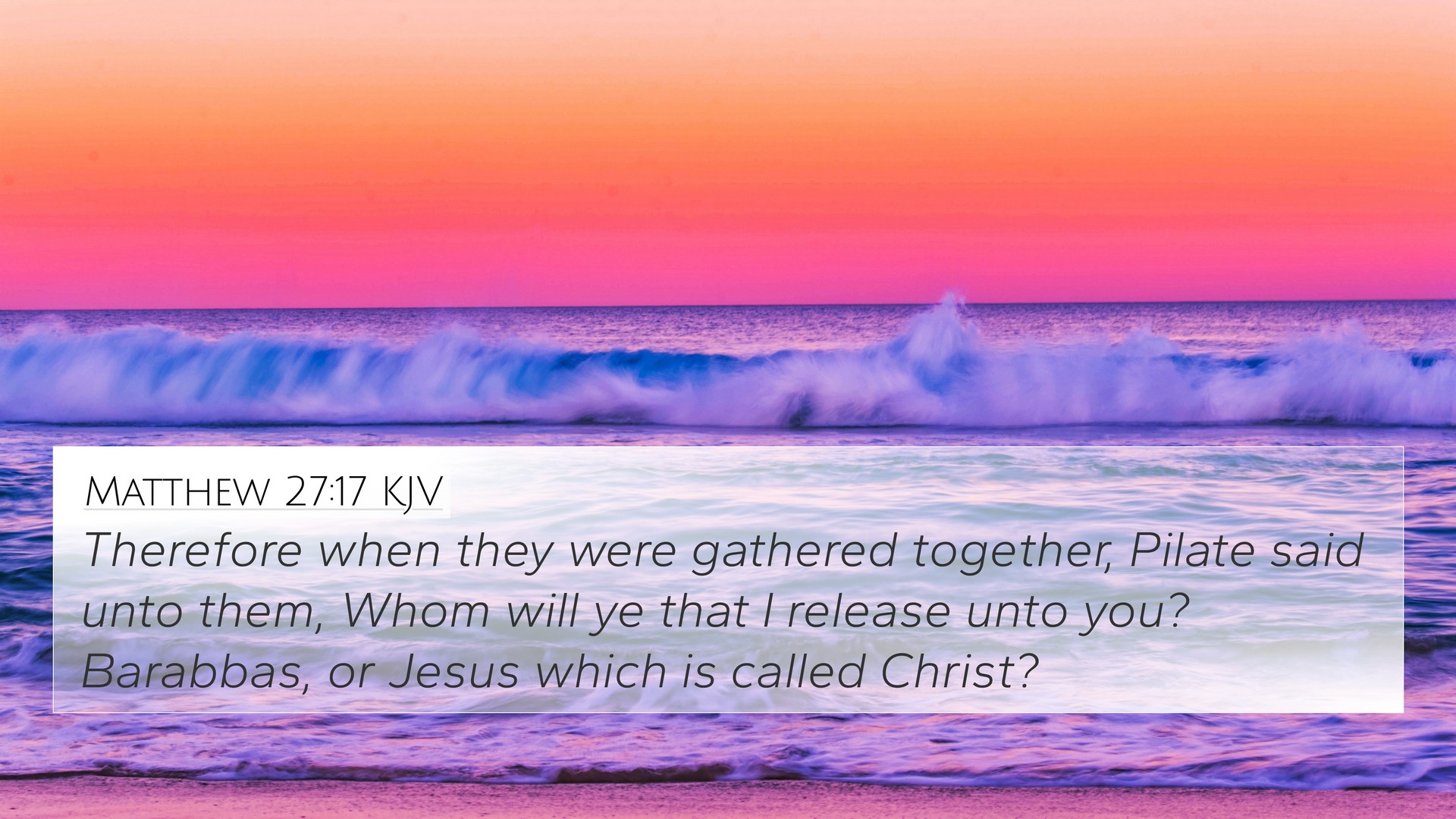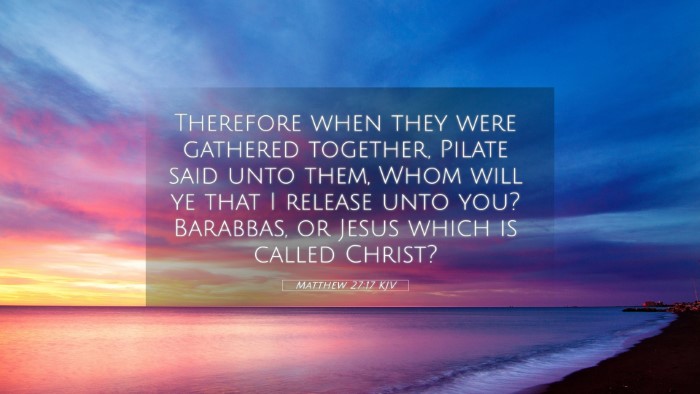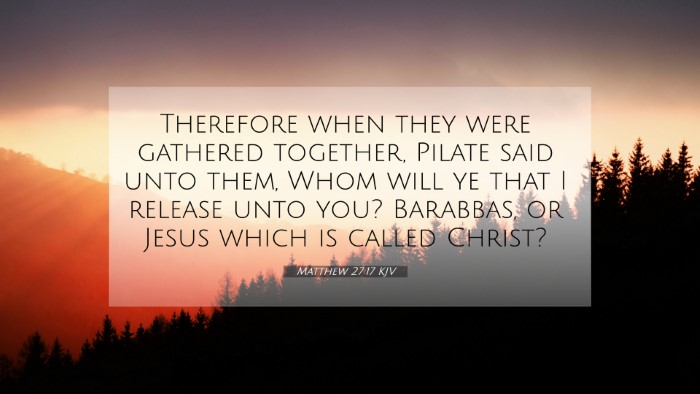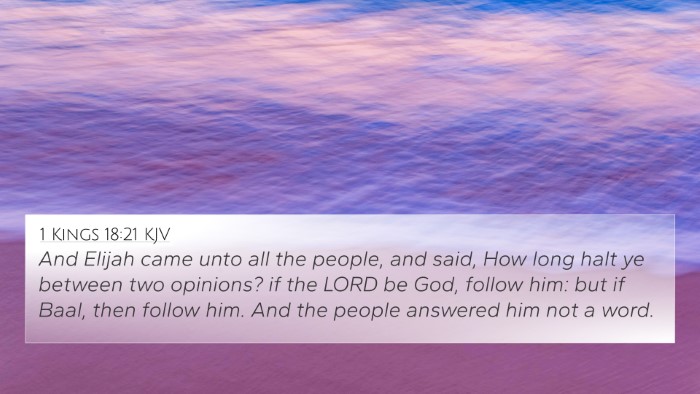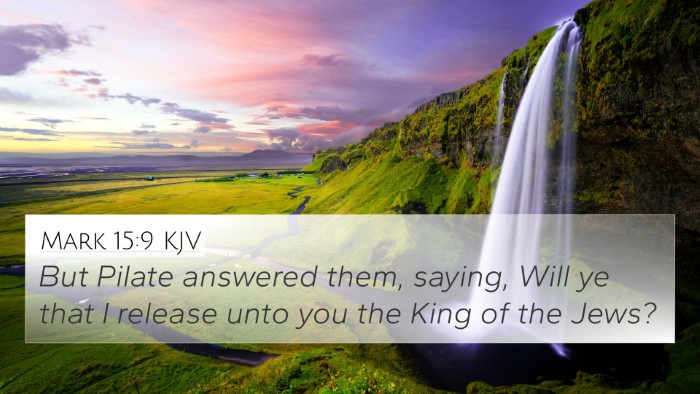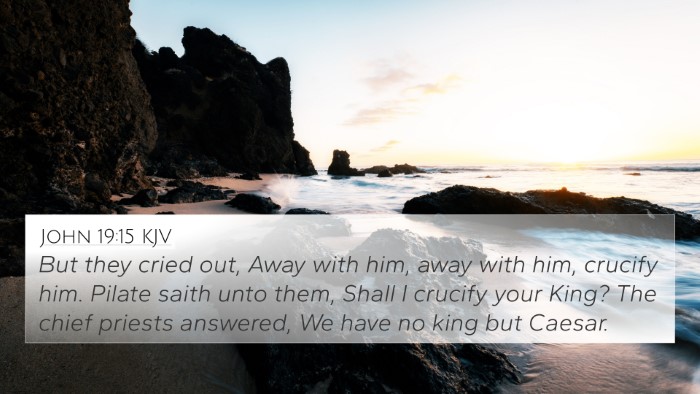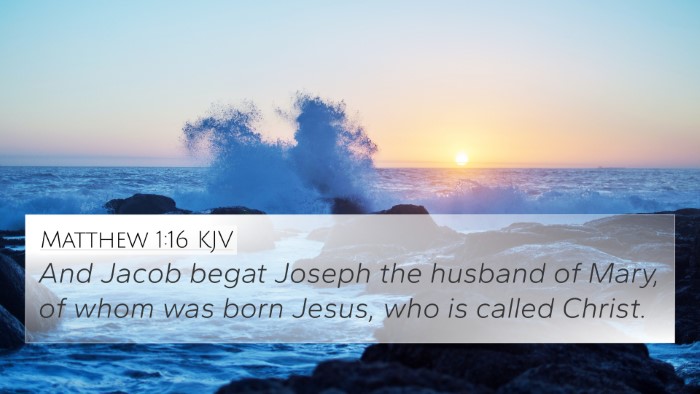Understanding Matthew 27:17
Matthew 27:17: "Therefore when they had gathered together, Pilate said unto them, Whom will ye that I release unto you? Barabbas, or Jesus which is called Christ?"
This verse occurs during the trial of Jesus, when Pontius Pilate, the Roman governor, presented the option of releasing either Jesus or Barabbas, a notorious prisoner. The choice given to the crowd highlights the societal and spiritual dynamics at play, illustrating the rejection of Jesus by His own people.
Key Insights from Commentaries
The following insights have been synthesized from various public domain commentaries:
-
Matthew Henry:
Henry emphasizes the gravity of the choice before the people, symbolizing the rejection of the true Messiah in favor of a criminal. He notes that this decision reflects the hearts of the people, showcasing their desire for earthly, rather than spiritual, redemption.
-
Albert Barnes:
Barnes highlights the political context, explaining that Pilate attempted to sway the crowd's decision by presenting Barabbas as an insurrectionist. This demonstrates the tension between Roman authority and Jewish expectations of a Messiah, drawing attention to the conflict Jesus faced in His mission.
-
Adam Clarke:
Clarke brings out the prophetic implications of this event, linking it to earlier foreshadowing in Scripture. He argues that the choice represented a profound historical moment that underscored the stark contrasts between sin and righteousness, freedom and captivity.
Thematic Bible Verse Connections
This verse can be linked to several other Biblical passages that resonate with its themes:
- Isaiah 53:3: Describes how Jesus was "despised and rejected" - a prophecy reflecting the crowd's choice.
- John 1:11: Speaks to Jesus coming to His own, but they did not receive Him, echoing the rejection in Matthew 27:17.
- Luke 23:18: Records the crowd's cry, "Away with this man, and release unto us Barabbas!" enhancing the dialogue of choice.
- Romans 7:15: Discusses the struggle between good and evil, akin to the dilemma faced by the crowd choosing Barabbas over Christ.
- Mark 15:6-15: Offers a parallel account of this event, providing insights into the differing reactions to Pilate's question.
- Acts 3:14: References how the people preferred a murderer to the Holy One, reinforcing the theme of rejection.
- Matthew 1:21: Foretells Jesus' purpose of saving His people from their sins, contrasting with the choice for Barabbas.
Cross-Referencing Biblical Texts
Understanding the connections between Matthew 27:17 and other verses provides depth to the narrative and illustrates the thematic links across the Bible.
- Using a Bible concordance can effectively aid in discovering related verses.
- Tools like a Bible cross-reference guide help in understanding the broader implications.
- Engaging in cross-reference Bible study methods allows for a more comprehensive analysis of the text.
Comparative Scripture Analysis
By examining the choices made in the Scriptures, we can glean moral and spiritual lessons applicable to our lives today:
- Reflect on the inter-Biblical dialogue regarding freedom: spiritual freedom Christ offers vs. the false freedom of sin.
- Consider the similarities between the choices faced by biblical characters and our decisions today.
Conclusion
Matthew 27:17 signifies a pivotal moment that showcases the conflict between worldly desires and spiritual redemption. The choices made then reverberate through time, asking us to consider whom we choose in the face of our own trials. By cross-referencing Biblical texts and examining their thematic connections, we unlock a deeper understanding of our faith.
